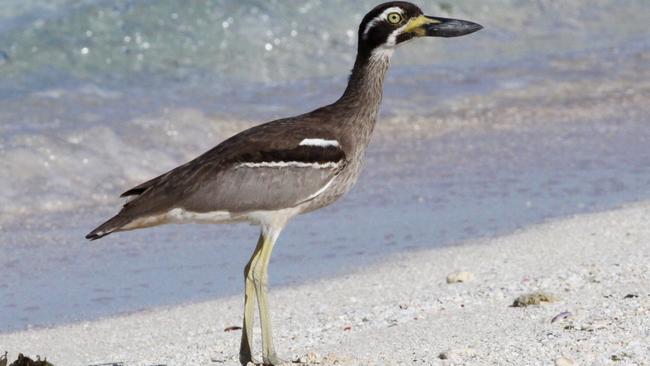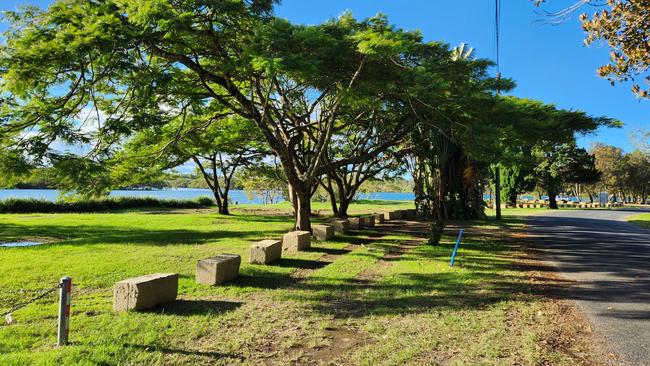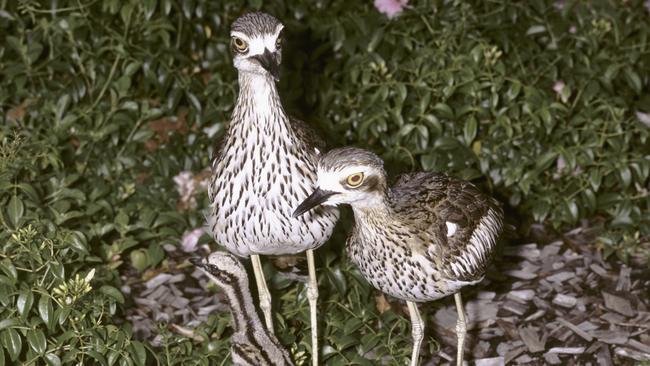NSW government puts hundreds of sandstone bollards on Urunga foreshore to protect critically endangered beach stone-curlew
Never mind the bollards: Hundreds of sandstone blocks have been left on a Coffs Coast foreshore to protect critically endangered shorebirds increasingly at risk of extinction.

NSW
Don't miss out on the headlines from NSW. Followed categories will be added to My News.
There’s only an estimated 15 breeding pairs left of the critically endangered beach stone-curlew in NSW
The rarely-seen bird resembles a miniature emu with extremely long legs for its short stature.
In Urunga, some of the shore bird species have nests o n Urunga Island.
And they are not the only endangered shoreline birds making the small Coffs Coast town their loved-up home.

The pied oyster catcher also lives along the shorelines of the Kalang River at Urunga.
Since the removal of five historic, unused boat sheds on Atherton Drive, there has been a lot more space for the birds to roam – almost 1100 square metres has been returned for community use.
However, that puts the birds at greater risk of being disturbed by people, cars and even dogs, damaging nests and vegetation.
Crown Lands within the Department of Planning, Housing and Infrastructure has now installed more than 300 sandstone blocks along three sections of Foreshore Drive to protect the endangered birds.
A department spokesperson said the blocks would discourage driving on sensitive areas of the foreshore to protect native vegetation and keep the area safe for families.

Signage has also been installed at two public boat ramps at Atherton Drive Reserve to alert the public that endangered shorebirds nest in the area.
Urunga Shorebird Working Group member Brad Nesbit said the signage would safeguard nesting areas.
“Urunga Island is a place where people enjoy picnicking, but during the breeding season from August till January, the beach stone-curlews can be badly disturbed by people and dogs causing the parents to abandon their eggs,” he said.
“There are only 15 breeding pairs in all of NSW so giving them free uninterrupted use of the island during the breeding season seems only fair, and hopefully these signs will encourage people to watch the birds from afar as they enjoy the facilities at Atherton Drive Reserve.”

The beach-stone curlew is related to the more common bush stone-curlew – known for its piercing call – which is rated as being of least concern environmentally in Australia, with up to 1000 breeding pairs estimated.
The beach stone-curlew has a larger bill and different marking, among other key distinctions.
Got a news tip? Email: toni.moon@news.com.au
More Coverage
Originally published as NSW government puts hundreds of sandstone bollards on Urunga foreshore to protect critically endangered beach stone-curlew




